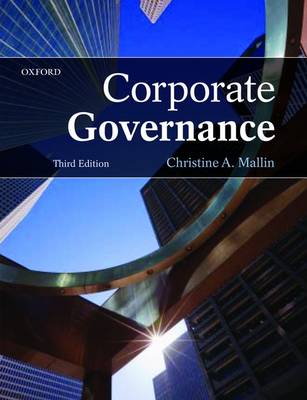By Christine Mallin The disquiet over excessive executive remuneration packages and a lack of appropriate links with relevant performance measures has been a matter of concern in recent years. After the financial crisis, there is even more of a focus on this aspect with shareholders becoming increasingly frustrated with both the amount and the design of executive remuneration packages.
Viewing: Blog Posts Tagged with: bonuses, Most Recent at Top [Help]
Results 1 - 2 of 2
Blog: OUPblog (Login to Add to MyJacketFlap)
JacketFlap tags: Finance, wpp, corporate governance, bonuses, *Featured, christine mallin, Business & Economics, C&WW, CEO pay, executive pay, hewlett-packard, network rail, nomura, salaries, talktalk, vodafone, remuneration, business, Add a tag
Blog: OUPblog (Login to Add to MyJacketFlap)
JacketFlap tags: UK, Business, Current Events, A-Featured, Finance, bankers, corporate governance, chris mallin, bonuses, risk management, Add a tag
By Kirsty McHugh, OUP UK
One of the main areas in corporate governance that has caught the headlines recently is risk management. There is a widely held perception that in recent years many boards have not managed the risks associated with their businesses well – whether that was because they did not identify the risks fully or whether because having identified the risks, they did not take appropriate action to manage them. In the below post, Professor Chris Mallin explains more about this. She is Professor of Corporate Governance and Finance & Director of the Centre for Corporate Governance Research at the University of Birmingham, and blogs with fellow OUP author Bob Tricker at Corporate Governance. She is the author of Corporate Governance, the third edition of which has just been published. Her other blog posts can be found here.
The Financial Reporting Council (FRC)’s Review of the UK’s Combined Code published in December 2009 states that ‘One of the strongest themes to emerge from the review was the need for boards to take responsibility for assessing the major risks facing the company, agreeing the company’s risk profile and tolerance of risk, and overseeing the risk management systems. There was a view that not all boards had carried out this role adequately and in discussion with the chairmen of listed companies many agreed that the financial crisis had led their boards to devote more time to consideration of the major risks facing the company.’ The FRC therefore proposes to make the board’s responsibility for risk more explicit in the Code through a new principle and provision. Moreover it also intends to carry out a limited review of the Turnbull Guidance on internal control during 2010. Many companies, and especially those in the financial sector, have already established risk committees whilst other companies especially smaller companies, may combine the consideration of risk with the role and responsibilities of the audit committee.
 The UK’s Alternative Investment Market (AIM) expanded rapidly during the 12 years following its inception in 1995. Then from 2007 onwards it went into decline. David Blackwell, in his article ‘Signs of recovery seen after years of famine’ states that ‘Hundreds of companies have left the market, the number of flotations has collapsed and fines for Regal Petroleum and others – albeit for regulatory infringements dating back years – have once again sullied the market’s reputation’. Nonetheless he points out that 2009 saw an improvement with the AIM index rising by 62 per cent over the year compared to a rise of 22 per cent in the FTSE 100.
The UK’s Alternative Investment Market (AIM) expanded rapidly during the 12 years following its inception in 1995. Then from 2007 onwards it went into decline. David Blackwell, in his article ‘Signs of recovery seen after years of famine’ states that ‘Hundreds of companies have left the market, the number of flotations has collapsed and fines for Regal Petroleum and others – albeit for regulatory infringements dating back years – have once again sullied the market’s reputation’. Nonetheless he points out that 2009 saw an improvement with the AIM index rising by 62 per cent over the year compared to a rise of 22 per cent in the FTSE 100.
The lighter regulatory touch on AIM has both attractions and drawbacks. On the one hand, companies find it easier to gain a London listing (albeit on AIM rather than the main market); on the other hand, this may bring concomitant risks for investors as they will be investing in companies which may well be riskier than their main market counterparts.
Family firms are the dominant form of business in many countries around the world and range from very small businesses to multinationa


